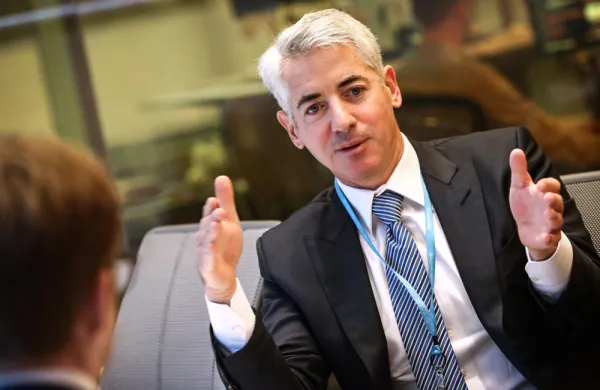For investors and managers hoping to align the ethical and fiduciary goals of their portfolios, the cost and benefits of impact investing are often difficult to quantify. In a recently published research paper, however, authors Andrew Lo, a professor of finance at the Massachusetts Institute of Technology, and Ruixun Zhang, a research affiliate at the MIT Laboratory for Financial Engineering and an assistant professor at Peking University, have proposed a framework that managers and allocators can use to determine the actual financial effect that an impact investment has on their portfolio. Impact is any kind of investing that has objectives above and beyond financial performance, such as socially responsible investing (SRI), environmental, social, and corporate governance (ESG) mandates, or any other non-financial investment criteria that takes into account social priorities and agendas.
The framework considers the correlation between the impact factor (that is, the limitations that determine which securities can or cannot be included in the portfolio) and the performance of those securities on an individual basis. Historically, investors have simply viewed impact investing as an extension of standard portfolio selection, but with additional constraints. This assumption, they say, implies that impact investments have a “non-superior risk/reward profile” — in other words, that they perform worse than investments that aren’t saddled with impact mandates.
“Typically, when we teach impact investing, the party line that finance academics give is that ‘if you’re going to limit your universe to a subset of securities, then clearly you’re going to disadvantage the client,’” Lo told Institutional Investor.
But that assumption isn’t always accurate, the authors argue. It’s based on the idea that the constraint (that is, the impact mandate) is statistically independent of the returns. What they’ve discovered is that sometimes that’s true, but sometimes it isn’t — and that it depends on whether or not the impact criteria have some actual relationship to the performance characteristics of the securities in the portfolio.
“Imagine if the subset of securities you are going to constrain your investor to happen to be those securities that Warren Buffett is going to invest in over the next three years,” Lo explained. “Now, let’s not debate whether we can get access to that information, but I think we can all agree that [that] sounds like a pretty good idea. So clearly, the act of limiting your investments to a subset [is not by itself] enough to guarantee [that] you’re going to make investors worse off.” As another example, Lo said to try to imagine a scenario in which a portfolio manager was limited to only investing in securities that started with the letter “Q.” Obviously, because that constraint has nothing to do with how well or how poorly those stocks might perform, its use wouldn’t necessarily help or hurt investors in that portfolio.
And that's exactly what the two men discovered: That impact investing can have both positive and negative impacts on a portfolio's risk-return profiles, and that it’s the proper selection of individual securities in a portfolio that matters, not the constraints placed on the portfolio. Equipped with this information, the authors realized that investors and managers needed a way to quantify this effect.
“That’s what we do in our framework,” Lo said. “The idea is to take various kinds of impact[s] and put them on the same footing. We developed a quantitative framework to illustrate [that it’s the] correlations between the selection methodology and the ultimate performance of the security [that] determines whether or not impact investing is going to have a positive or negative impact. And we show how you can actually measure it, and then once you measure it, we show how you can take advantage of it or disclose it to investors.”
The paper uses the Cystic Fibrosis Foundation as an example of how this performance method can be mutually beneficial to managers, investors, and stakeholders. Over the course of 12 years, the CF Foundation invested $150 million into a Boston-based biotechnology firm called Vertex Pharmaceuticals, in the hope that Vertex could develop a drug that would minimize the effects of CF. This campaign resulted in the development of a drug called Kalydeco, which minimizes the underlying causes of CF. In 2014, the foundation sold its royalties from the development for $3.3 billion, a massive return.
“That’s an example of a very, very profitable impact investment,” Lo said. “Keep in mind, the CF Foundation couldn’t care less about monetary return. Their goal was to develop a drug. Because of their single-minded focus, that’s what enabled them to succeed.” Lo said that the CF story is a strong example of a causal relationship: The impact could not have happened without the return, and the return couldn’t have occurred without the impact.
Lo’s and Zhang’s framework can be applied to institutional portfolios in three different ways, Lo said. First, the framework will open up the dialogue between investors and portfolio managers about the specificities of their impact investments. “It’s a framework for discharging fiduciary responsibilities,” Lo said.
Second, the framework gives portfolio managers a way to optimize how they achieve impact. According to the findings, once the correlation is measured, managers can use standard portfolio theory methodology to construct a “super efficient” portfolio, Lo said.
The third application of the framework is performance attribution. After a manager has made the investments and disclosed the projected performance to the allocator, the framework can calculate the actual performance. “Once again, you can communicate to your investors whether or not you achieved the impact [that] you said you would, and if the cost to investors was what you represented,” Lo said.







